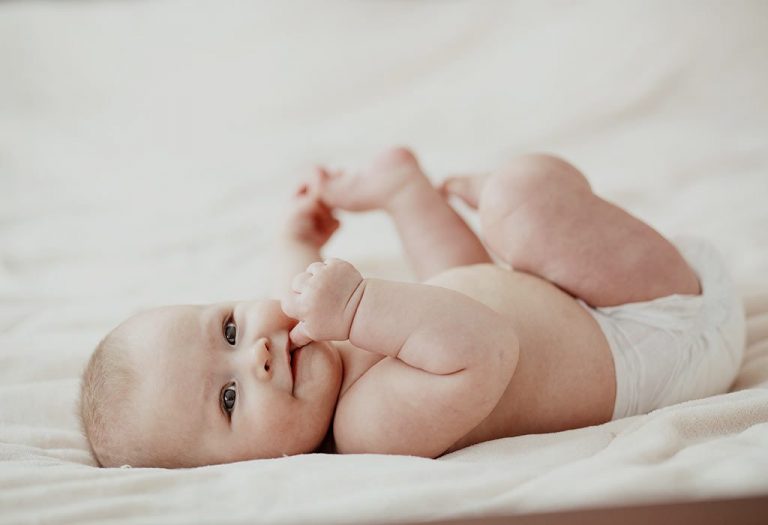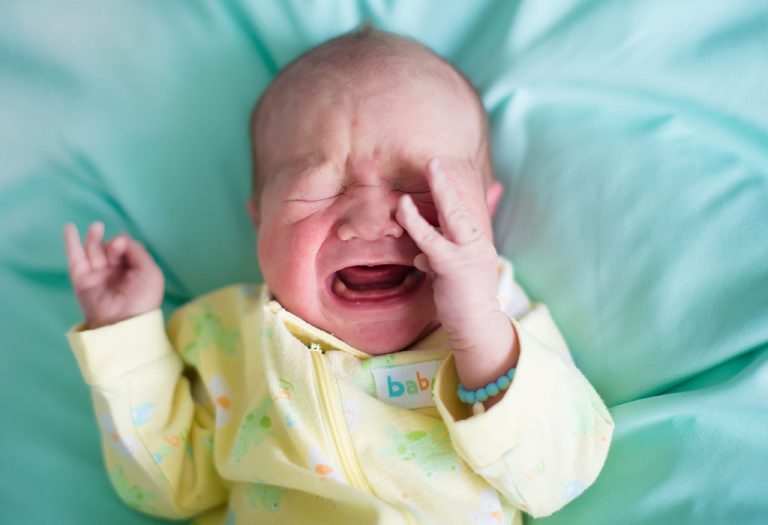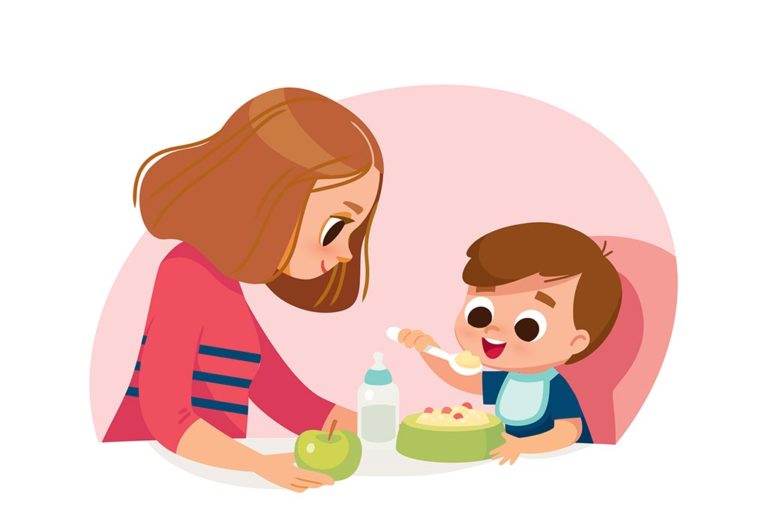Do Babies Have Kneecaps?

Babies are born with many fascinating and unique physical features that gradually develop as they grow. The first year of a baby’s birth is extremely crucial, as a major part of development is still going on and continues into the second year as well. One common question many people have is whether babies have kneecaps. Most people believe that babies are born without kneecaps, but is that true? Are babies born without kneecaps? While it may seem like an obvious part of the body, the development of kneecaps is actually a bit different in infants. If you are wondering if this is true or false, you’ve come to the right place. Read this article to find out if babies are born without kneecaps.
Do Infants Have Kneecaps When They Are Born?
Most people think that babies are born without kneecaps but that is not correct. Newborns are born with kneecaps that are made of cartilage, which is soft. Later as they grow and their bone structure develops, ossification takes place and it turns hard. The common misconception about babies not having kneecaps from the fact that when an x-ray is taken of a newborn baby’s knees, the kneecap is not visible as it is made up of cartilage and not bones. And so the belief persists!
When Do Babies Get Kneecaps?
This is a commonly asked question. The development of a baby’s kneecap starts in the mother’s womb itself when she is about four months into gestation.
How the Kneecaps of a Baby Develop?
During the formative years, newborn kneecaps are made up of cartilage. When the baby is about 3-5 years old, the process of ossification starts. The cartilaginous patella (kneecap) starts developing into a bony one. The development of the kneecap then continues throughout the infant stage until she is about 10-12 years of age i.e. until the cartilage gives way to a bony structure. However, even at this stage, the kneecap does have some bit of cartilage and it continues to develop throughout her adolescent period. Once the bone fully expands, it develops into a fully grown patella (kneecap).
Osteoblast cells grow in the cartilage linings and form a solid and firm bone which covers the cartilage. The blood vessels which grow around the cartilage develop into a nutrient artery, which supports the development of the bones. The process of ossification intensifies and produces more bone cells resulting in the formation of a strong, bony kneecap.
Complications During the Kneecap Development
The development of kneecaps in babies is a gradual process that plays a crucial role in their overall growth and mobility. However, like any natural development, it can sometimes come with complications. Here are a few issues that can affect the proper formation of the kneecaps.
1. Torn Meniscus
The meniscus is a rubbery, C-shaped cartilage that cushions the knee joint, sitting between the tibia and femur. In children, a torn meniscus can occur due to physical activities, sports, or trauma. This injury may cause pain, swelling, and difficulty with movement (1).
2. Injuries
As babies start crawling and eventually walking, they may be at risk of knee injuries. Accidental falls or impact can damage the soft cartilage in the knee, leading to potential long-term complications (2).
3. Osgood-Schlatter Disease
This condition typically affects older children and adolescents but can occasionally be seen in younger children as their bones grow. It causes inflammation and pain in the area where the kneecap tendon attaches to the shinbone (3).
4. Congenital Patellar Dislocation
In some cases, babies are born with a dislocated kneecap, which can affect their mobility and require surgical intervention to correct (4) (5).
5. Bipartite Patella
A bipartite patella occurs when the kneecap doesn’t fuse completely during development, leaving it in two separate pieces. This condition can cause discomfort and pain, particularly during physical activity (6).
Is There Any Way to Protect Your Child’s Kneecaps?
The cartilage in the knee is the reason why babies can crawl so well without any pain. It acts as a cushion because of its softness. However, crawling around can cause external bruises to the baby’s knees. A rough patch on the floor or small particles of sand or mud that comes from outside into the house are some of the ways in which the baby’s knees may get bruised. So what should you do to protect your baby’s knees? You can make her wear knee protectors (2). These baby knee protectors are strips of soft cloth with cushions in the knee area. Tie them around your child’s knees and you can let her crawl around without any worry. Knee protectors are available online or on stores. If you have time and energy, you can also make it at home with a soft, with a cotton sari. However, make sure not to tie this too tightly.
When to Consult a Doctor?
If a child experiences any of the following symptoms related to knee pain or injury, it’s important to consult a doctor:
- Persistent pain
- Swelling or bruising
- Limited range of motion
- Popping or clicking sounds
- Difficulty walking
FAQs
1. Do baby’s kneecaps hurt while developing?
No, babies don’t experience pain during the development of their kneecaps, as the cartilage in the knee is soft and flexible. Pain in the knee is typically associated with injury, infection, or developmental issues unrelated to normal growth.
2. Are there any signs that a baby’s kneecaps aren’t developing properly?
If there are noticeable mobility issues or pain, or if the child’s knees appear abnormally shaped, it’s important to consult a doctor. These could be signs that the kneecaps aren’t developing as they should.
3. Do all babies develop kneecaps at the same time?
No, the timing of kneecap development can vary from one child to another. While most babies will have fully formed kneecaps by age 4 or 5, some may take a little longer or experience variations in development.
So now you know that newborns are born with kneecaps, but with underdeveloped cartilaginous. However, for your baby’s cartilage to grow into a strong, bony kneecap, you must make sure that her diet is rich in calcium to enrich and have healthy bones. Proper calcium intake will not just help in the proper formation of her kneecap but also help in the development of her overall bone health.
References/Resources:
1. Torn Meniscus; Cleveland Clinic; https://my.clevelandclinic.org/health/diseases/17219-torn-meniscus
2. Knee Injuries; Nemours KidsHealth; https://kidshealth.org/en/parents/knee-injuries.html
3. Osgood-Schlatter Disease (Knee Pain); American Academy of Orthopaedic Surgeons; https://orthoinfo.aaos.org/en/diseases–conditions/osgood-schlatter-disease-knee-pain/
4. Wada. A, Fujii. T, Takamura. K, Yanagida. H, Surijamorn. P; Congenital dislocation of the patella; PubMed Central; https://pmc.ncbi.nlm.nih.gov/articles/PMC2656798/
5. Dislocated Kneecap (Dislocated Patella); Nemours KidsHealth; https://kidshealth.org/en/parents/dislocated-kneecap.html
6. Pan. T, Hennrikus. W; Symptomatic Bipartite Patella in Adults Treated With Open Excision: Outcomes and Management; PubMed Central; https://pmc.ncbi.nlm.nih.gov/articles/PMC9359909/
Also Read:
Hypotonia in Babies
Torticollis in Infants
Brittle Bone Disease in Infants
Easy and Effective Exercises for Babies
Fun Exercises Mother Can Do with Baby
Exercises to Make Your Baby’s Bones & Muscles Stronger
Was This Article Helpful?
Parenting is a huge responsibility, for you as a caregiver, but also for us as a parenting content platform. We understand that and take our responsibility of creating credible content seriously. FirstCry Parenting articles are written and published only after extensive research using factually sound references to deliver quality content that is accurate, validated by experts, and completely reliable. To understand how we go about creating content that is credible, read our editorial policy here.























